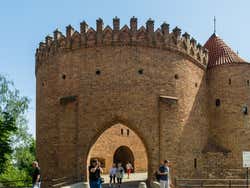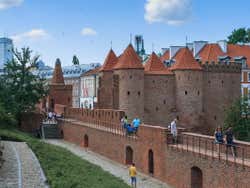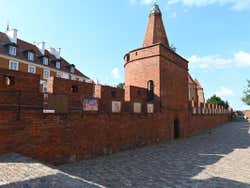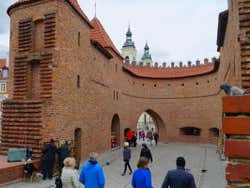
Warsaw Barbican
The Warsaw Barbican serves as the gateway linking the Old Town to the newer part of the capital. This historic defensive bastion, once a part of the city walls, endured the severe attacks by the Nazis during World War II.
History of the city walls
In the 15th century, the construction of Warsaw's defensive walls began, aiming to safeguard the Old Town (Stare Miasto) from external threats. As part of this defensive strategy, a watchtower and main gateway to the historic center were erected, giving rise to the Warsaw Barbican.
Designed by an Italian Renaissance architect in 1540, this 30-meter-long (100-foot) barbican boasted an imposing presence. Despite its grandeur, it saw action only once in Warsaw's history, defending the city against the Swedish invasion in 1656.
During World War II, Nazi bombings severely damaged the Barbican. In the following years, reconstruction efforts utilized salvaged original bricks from the ancient construction. Today, you can see a subtle dark line on the structure, marking the height of the original foundations.
The Barbican today
The Warsaw Barbican is one of the city's most beautiful landmarks, serving as a vital link between the Old Town and the modern urban landscape. Its architectural style bears a resemblance to the Barbican in Krakow.
Following the street through the entrance of the Barbican, you'll be led to the Warsaw Market Square, situated in the heart of the Old Town. The area around the Barbican features numerous restaurants and souvenir stores, making it a vibrant and appealing area in Warsaw.





